Operation Bluebird: project-based learning takes a community
February 13, 2018An interview with Kate Anderson, written by Robyn Bailey
An Idea Seed
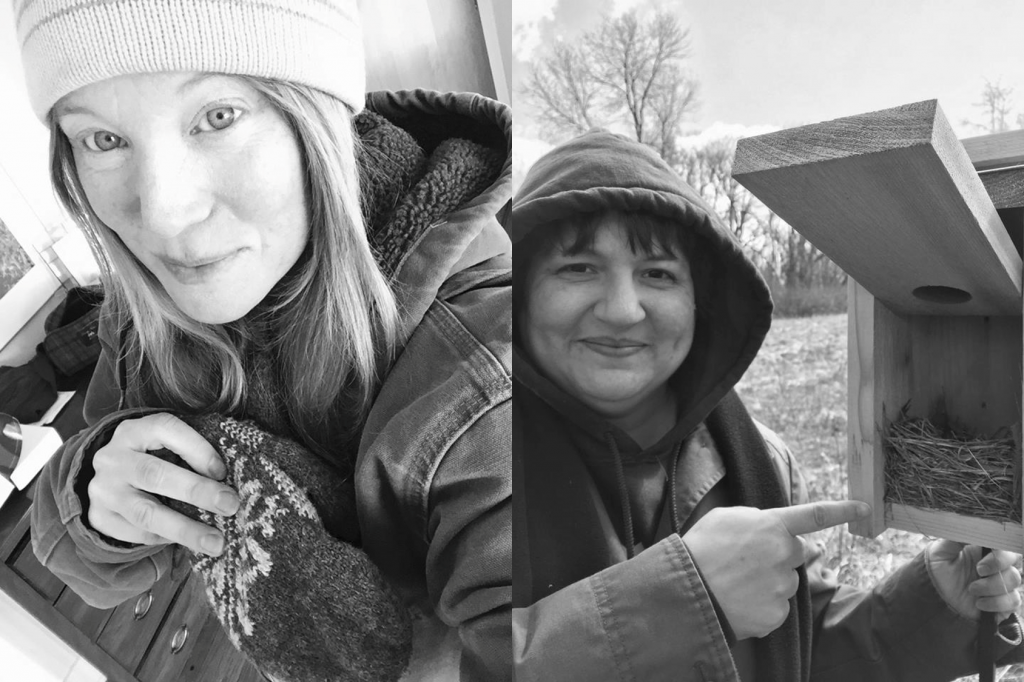
Two Women On A Mission
Kate Anderson (left) and Bethany Gray (right) are the ringleaders of Operation Bluebird, although they are quick to emphasize how much collaborative help they receive from the community.
It all started when Kate Anderson was given a bluebird box as a birthday gift from her mother in August of 2015. Kate lives on Xarifa Farm, a 135-acre farm in Yellow Springs, Ohio, the entirety of which is protected under a conservation easement for open space. Kate, a board member of the Tecumseh Land Trust and an education committee member, had been looking for a way to share the farm with her community, especially its younger members. The bluebird box she had been given set her mind in motion about ways to spark a love for birds and conservation among her neighbors, while allowing access to protected private lands. The only problem was that she hadn’t yet seen any bluebirds on the farm, and she didn’t really know much about them.
Enter Bethany Gray. Bethany is a certified naturalist and member of the Ohio Bluebird Society, and she was looking for a space to install a bluebird trail when she approached the Tecumseh Land Trust for help. The stars aligned, and the two women began installing a few boxes at the farm in early 2016. Bethany’s knowledge about cavity-nesting birds and their preferences was exactly what Kate needed to help nourish an idea that had been forming since she first received the gifted birdhouse. Not long after, like a wink from the Universe, the very first bluebird egg was laid in the box Kate received from her mother.
Learning By Doing

A Transformative Experience
It's hatching day in this Eastern Bluebird nest!
With an M.S. in education and school-aged children of her own, Kate understood that in order for the next generation to take conservation action, they needed to have a personal connection to nature. In her words, “Awareness precedes transformation. If we want to change behavior, we need to start by fostering greater awareness and relationships with the outdoors. When things become up close and personal, we begin to care, and only when we truly care, will we take action. It all starts with the relationship.” With this in mind, she approached Tecumseh Land Trust and her son’s seventh-grade science teacher, Becca Eastman, at McKinney Middle School with an idea for project-based learning and conservation education on the farm. By the spring of 2017, students from the local middle school were making nest boxes in shop class, many of which were installed at the farm and monitored for NestWatch. “Operation Bluebird” was officially off the ground! In its first season, about 70 students visited the farm three times to check boxes. Bethany also taught the students about responsible monitoring, and each got certified to monitor nests for NestWatch. Students had the opportunity to collect data and present what they learned (watch a video that they made). As Kate said, “It took the land trust, school and community really pulling together to make it happen. It was a team effort, indeed.”
In its first year, the modest trail fledged 19 Eastern Bluebirds, 21 House Wrens, and 10 Tree Swallows—an excellent start! As an educator, Kate delighted in watching the students’ awareness grow, as the students moved beyond asking “what’s in the box?” to more nuanced questions about what’s going on around nest boxes (i.e., habitat loss, invasive species, migration). Now the kids want to come back more often, which is fine with Kate and their teacher. In 2018, they’ll be back on the trails monitoring nests and engaging in citizen science, this year focusing on how climate change affects cavity nesters. Kate was inspired to launch this program because she really believes that “When you see a baby bird, it stays with you. You don’t forget it.” That’s the power of transformative learning.
We want to know: Do you remember your first baby bird? Do you work with youth to inspire and engage future scientists? Tell us about it in the comments!

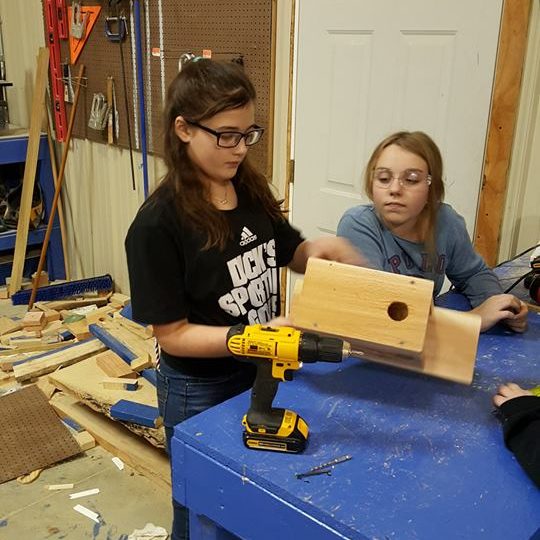
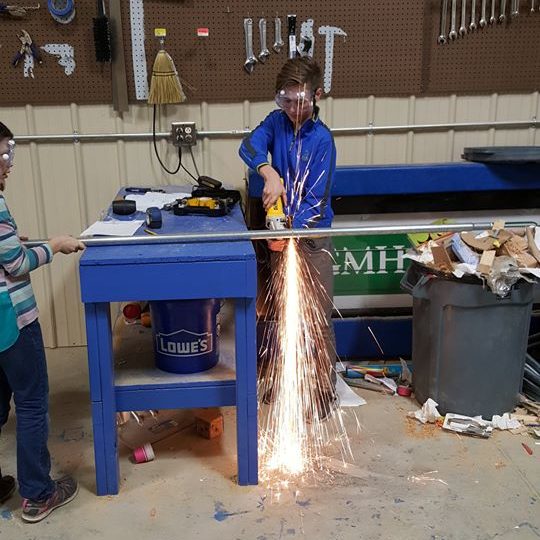
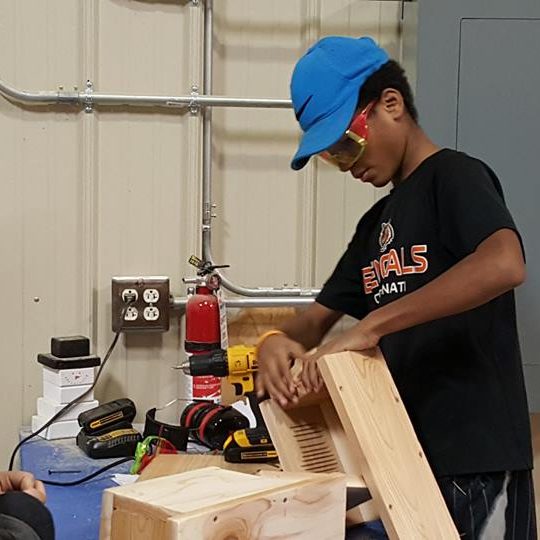
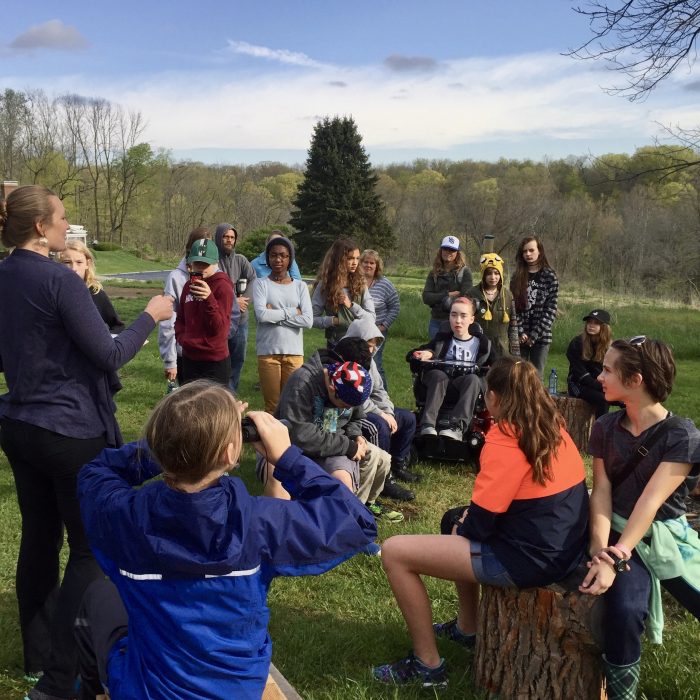
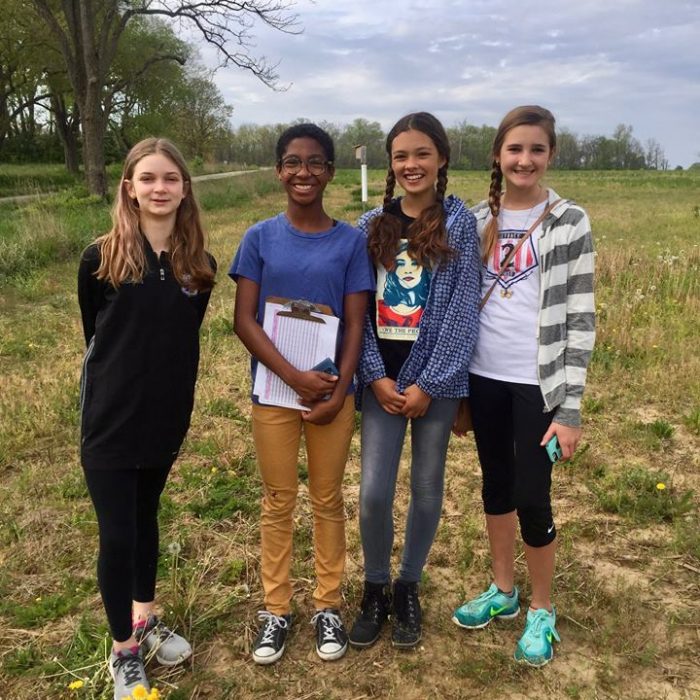
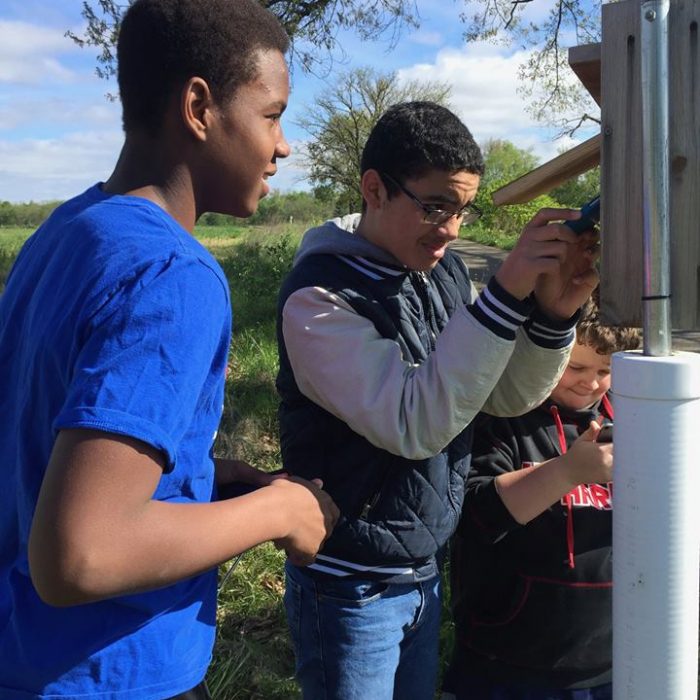
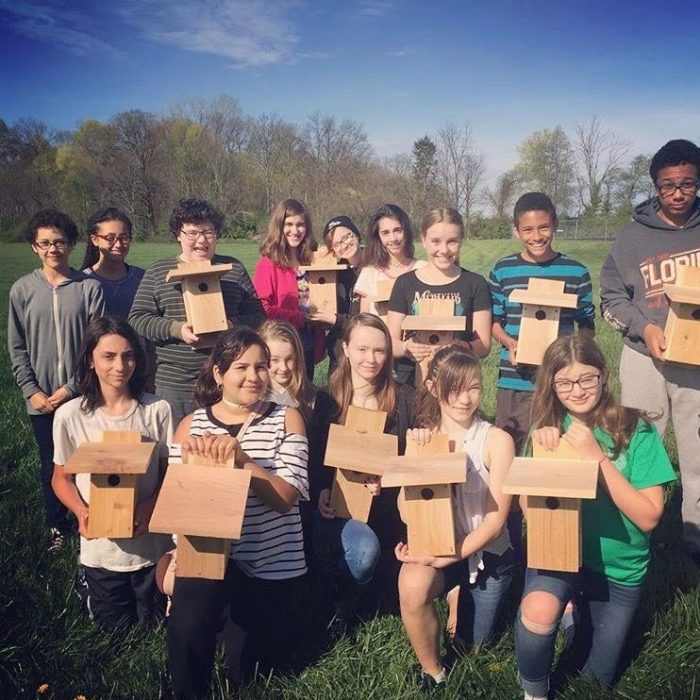
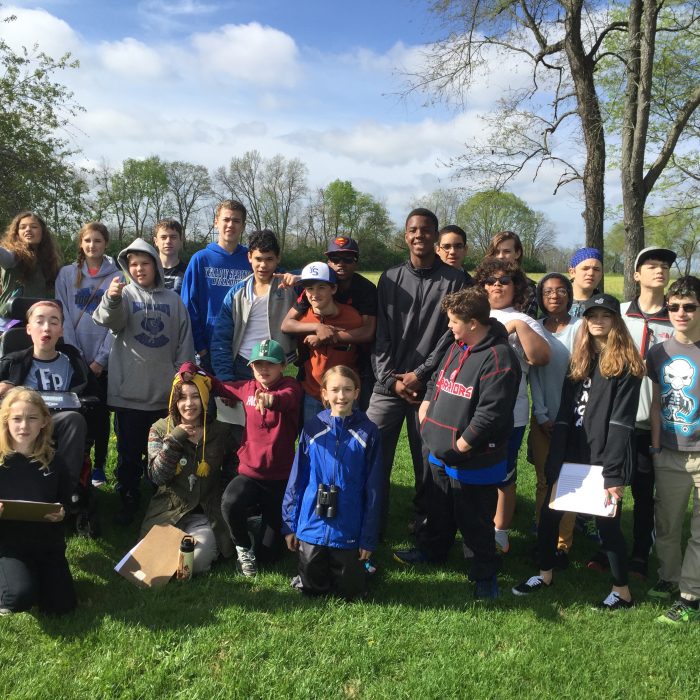
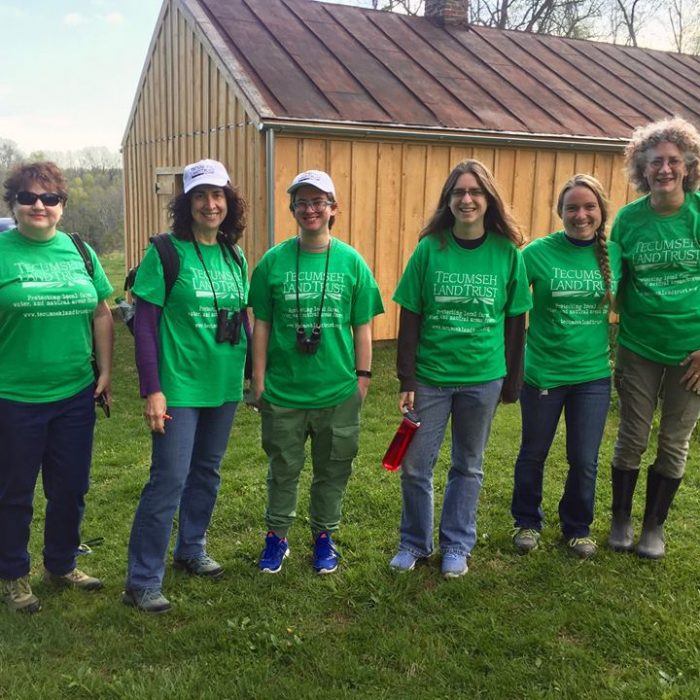
9 comments on “Operation Bluebird: project-based learning takes a community”
Hi. My name is Steve Jacoby. I have 43 bluebird houses I am monitoring at the Daniel Boone Homestead and on my property. I have several houses I would like to move in my two groups, but I can’t figure out how. I am 63 and not very high tech, if you know what I mean…
I would greatly appreciate your help with this.
Thank you!
Steve
Hi Steve,
I’ve replied via email. Please check your inbox for a message from nestwatch@cornell.edu.
Thank you!
-Holly Faulkner, Project Assistant
I have a bluebird box given me by my uncle that I’d love to install in my backyard. I live in Stone Creek subdivision in Liberty Township Ohio.
I’d love some advice about how and where to mount it.
Hi Ray,
Please check out the Eastern Bluebird page on our Right Bird, Right House tool, found here: https://nestwatch.org/learn/all-about-birdhouses/birds/eastern-bluebird/
Scroll down on the page to find ideal nesting habitat, spacing, box orientation and box height, among other details.
-Holly Faulkner, Project Assistant
I am interested in monitoring a bluebird nest and would like rules to comply with and to whom info is reported. I live in Mt. Vernon, ME. Thank you for your help
Hi Glenda, If you’re interested in reporting to NestWatch, please view our overview page here for more information and important links, especially to our Code of Conduct. You can email nestwatch@cornell.edu with more questions.
I’m looking to set up a nest box project in my local park for a school project. Would love any resources or advice for a large scale project.
Hi Madeline, I think our Right Bird, Right House tool would be a great place to start. You can use the filters to find which birds nest in your area and habitat. Toggle between habitats if your park has more than one (i.e. forest, lake, meadow/field, etc.) to see how the species list differs. Large-scale nest box trails should ideally have a monitoring plan in place, even if it’s just once a year, so that the boxes can be maintained properly. Installing boxes on poles outfitted with predator guards is also ideal. You can participate in NestWatch by monitoring more often and collecting data during the breeding season – depending on the number of boxes, you might be interested in garnering volunteer nest monitors to help accomplish this.
In any case, if you have more questions or need further advice, please feel free to reach out to us at nestwatch@cornell.edu – we’re happy to help! These comment sections are not regularly monitored.
What a fantastic initiative! It’s inspiring to see how Operation Bluebird fosters community engagement through project-based learning. The hands-on approach not only helps participants connect with nature but also emphasizes the importance of collaboration. Looking forward to seeing more outcomes from this program!